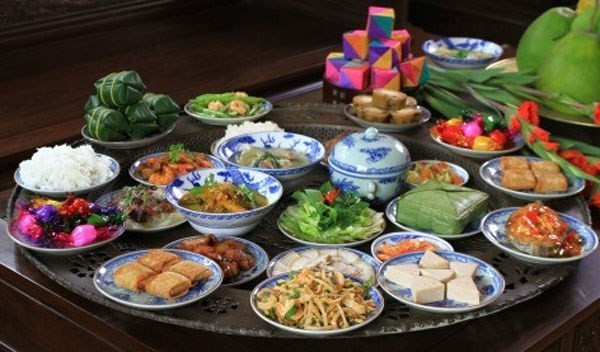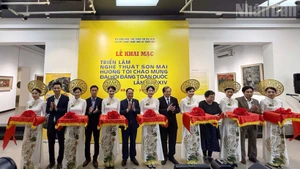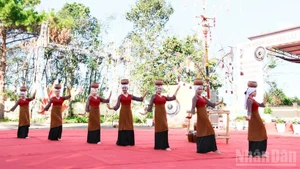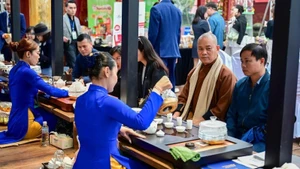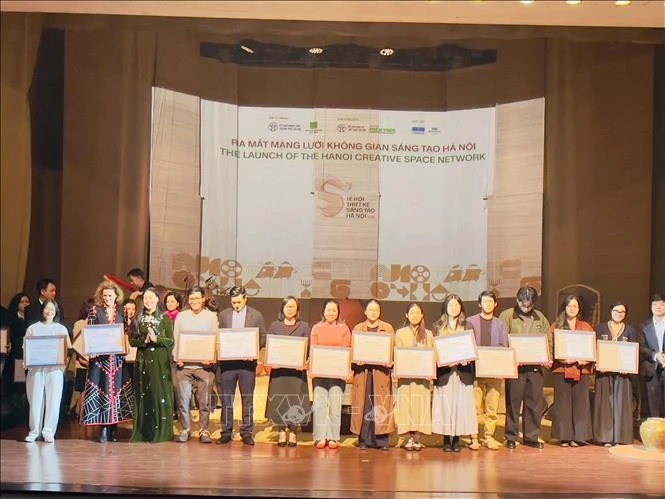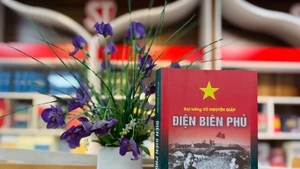Most Kinh (Vietnamese ethnic majority) people start preparations a month before the festival.
Many people usually cook nine dishes: banh chung (square sticky rice cake), dua hanh (pickled onions), gio nac (boiled lean pork sausage) and gio thu (boiled pork head sausage), thit dong (frozen meat), nem ran (spring rolls), canh mang (bamboo shoot soup), canh bong tha (dried pig skin soup), boiled chicken, and che kho (sweet green bean paste).
These carefully cooked traditional dishes are put on the home altar to worship their ancestors during Tet festival.
Of all the dishes, banh chung is the soul of Tet, reflecting the quintessence of heaven and earth through the skilled hands of humans. To make the cake, the most fragrant and fibrous sticky rice are chosen and the cakes often have pork, green beans, dried onions and pepper in the centre.
The cakes are often eaten with pickled onion because its sour and light peppery flavour helps digestion. Meanwhile, gio nac and gio thu have remained on the offering food tray at Tet from the past to the present.
Nem (spring rolls) is a popular dish in the north that always has a place on a Tet food tray because it is so flavourful and healthy. It is made out of minced pork, carrots, wood ear fungus, green-bean sprouts, bean glass noodles and other ingredients. The fried rolls are then dipped into a bowl of sauce of mixed fish sauce, sugar, lemon or vinegar, chili and minced garlic.
The Tet food tray of northerners never lacks a big bowl of canh mang kho (dried bamboo shoot soup).
Ethnic groups, such as the Mong, Thai, Muong, Tay, Nung, Dao, and Co Tu, have their own New Year dishes.
For the Mong, their Tet tray should include dishes such as pork, wine, round cakes made from glutinous rice and maize cakes.
Fried fish is the specific dish of the Thai. They believe the stream deity will protect them from danger.
The Nung group often made banh khao from dried glutinous rice powder, minced pork fat and sugar to worship their ancestors. The elderly said the sweet fat in the cake would prevent unlucky happenings in the New Year.
Meanwhile, the Co Tu in Tay Nguyen (the Central Highlands) make their own wine known as ruou Ta Vat and ruou can to welcome Tet. All visitors at New Year are invited to enjoy these wines.
Each Dao household has its own thit lon chua (sour pork), locally known as o sui, in New Year holidays. Ingredients include pork, salt, and cool rice. The dish should be eaten with la lot (wild lolot leaves) and la prang lau (a kind of wild leaf), and dipped in a bowl of mixed lemon and chili.
The Tay welcome Lunar New Year with a roast piglet. They often choose local piglets with small bones, firm and lean meat weighing from 20kg to 30kg. People often put mac mat (a kind of wild leaf and fruit) mixed with spices in the pig’s belly and cover the skin with honey. They then roast it on charcoal for three hours until well done. The food is dipped in a sweet and fragrant sauce gotten from the pig’s belly.
